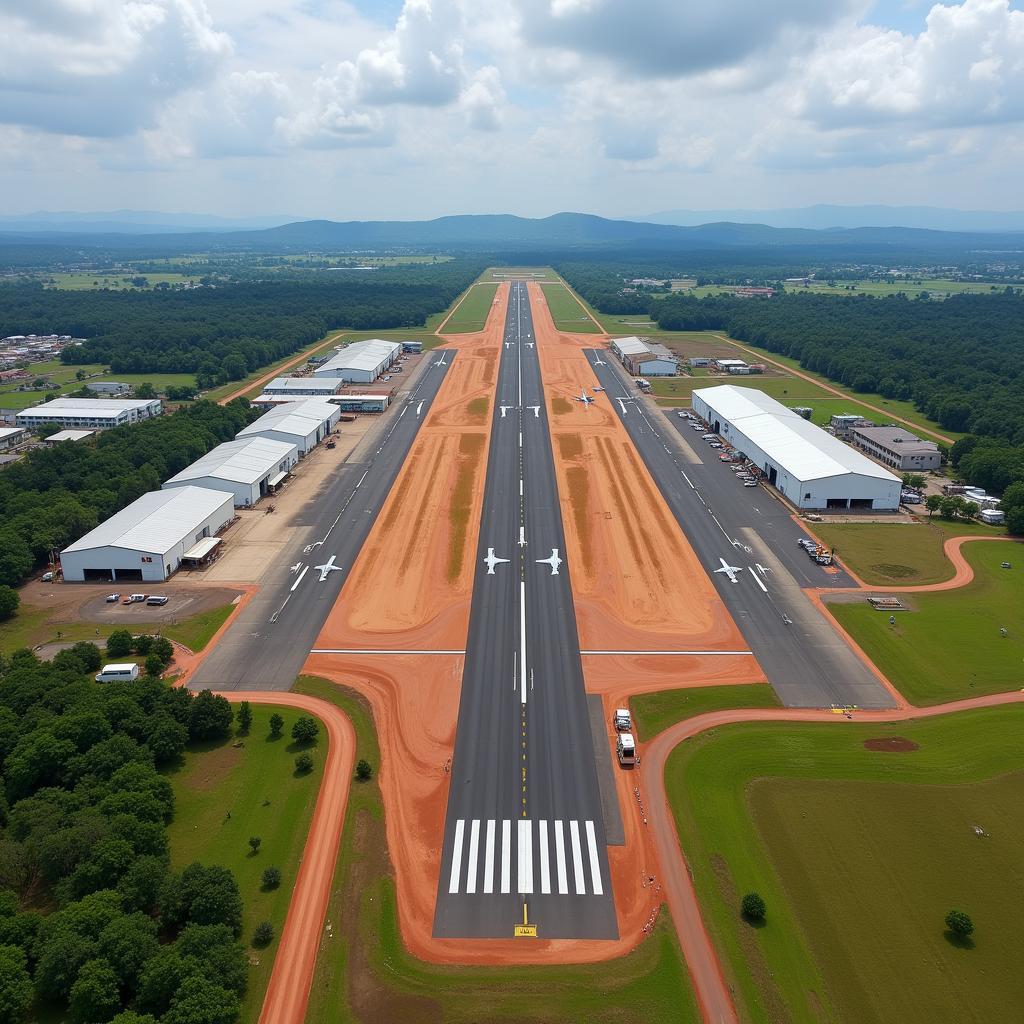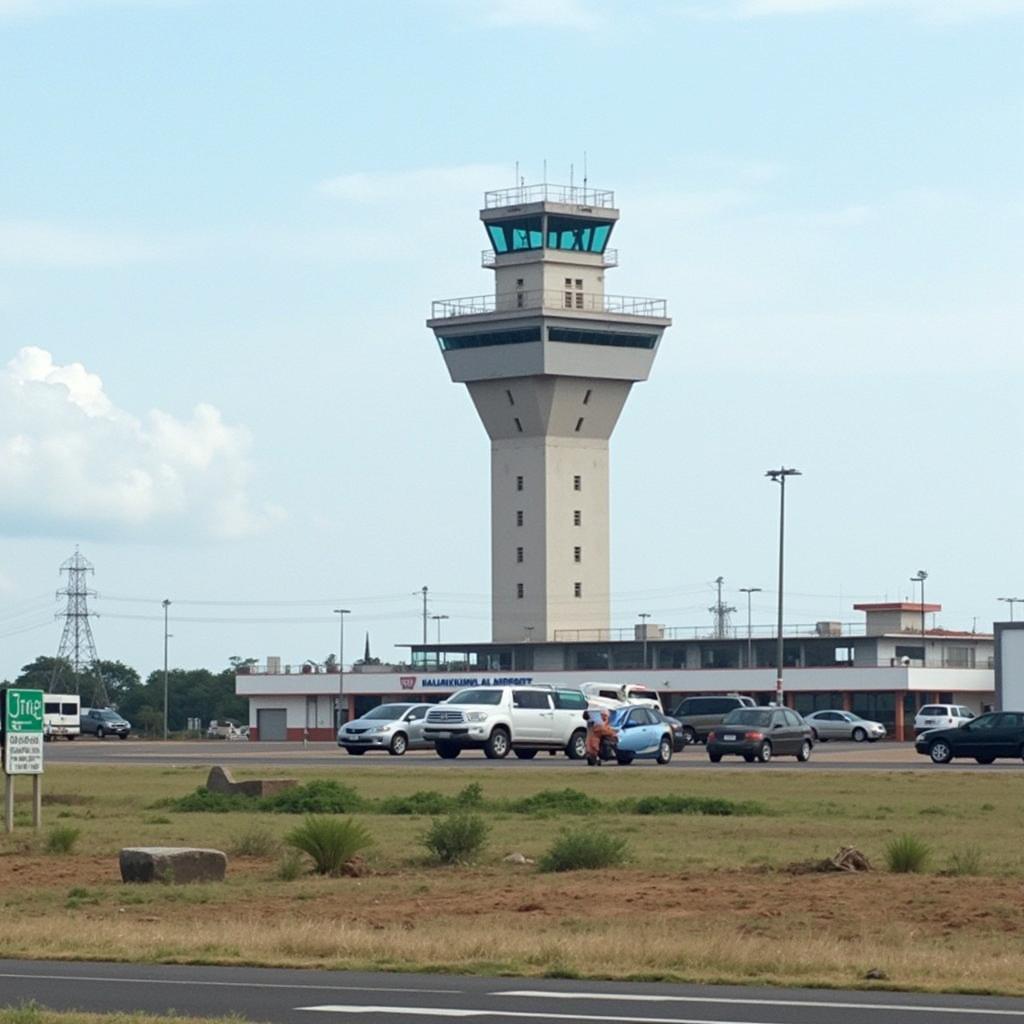Kalaikunda Airport, located in West Bengal, India, holds a significant place in the country’s aviation history. This guide will delve into the airport’s history, operations, and importance, providing a comprehensive overview for aviation enthusiasts and travelers alike.
A Historical Overview of Kalaikunda Airport
Originally built by the Royal Indian Air Force during World War II, Kalaikunda Airport played a crucial role as a base for Allied operations in the Southeast Asian theater. The airfield facilitated critical supply lines and supported various combat missions. After independence, the Indian Air Force took over the airport, continuing its development and transforming it into a key airbase. Over the years, Kalaikunda has witnessed numerous upgrades, evolving into a modern facility capable of handling a variety of aircraft.
Kalaikunda’s Role in Modern Indian Aviation
Today, Kalaikunda Airport serves as a premier airbase for the Indian Air Force, housing several squadrons of fighter jets. The airport plays a vital role in maintaining national security and participating in various training exercises. While primarily a military airfield, Kalaikunda also occasionally handles civilian flights, further highlighting its versatility and importance to the region’s connectivity. The airport’s strategic location makes it a crucial hub for both military and civilian aviation.
 Kalaikunda Airport Aerial View Showing Runways and Infrastructure
Kalaikunda Airport Aerial View Showing Runways and Infrastructure
Facilities and Infrastructure at Kalaikunda
Kalaikunda Airport boasts modern facilities and infrastructure to support its diverse operations. The runway is capable of accommodating a range of aircraft, from fighter jets to transport planes. The airport also features modern hangars for maintenance and storage, along with advanced air traffic control systems. These facilities ensure smooth and efficient operations, contributing to the airport’s reputation as a well-equipped and capable facility.
Navigational Aids and Safety Systems
Equipped with state-of-the-art navigational aids and safety systems, Kalaikunda Airport prioritizes the safety and efficiency of all flight operations. These systems provide precise guidance to pilots, enabling safe landings and takeoffs, even in challenging weather conditions. The airport’s commitment to safety underscores its dedication to upholding the highest standards in aviation.
 Kalaikunda Airport Control Tower Managing Air Traffic
Kalaikunda Airport Control Tower Managing Air Traffic
The Future of Kalaikunda Airport
With plans for further development and expansion, Kalaikunda Airport is poised to play an even greater role in Indian aviation in the coming years. Proposed upgrades include further modernization of infrastructure and the potential expansion of civilian operations. These developments will not only enhance the airport’s capabilities but also contribute to the region’s economic growth.
“Kalaikunda’s strategic location and existing infrastructure make it a prime candidate for future expansion,” says Captain Rajiv Sharma, a retired Indian Air Force pilot with over 30 years of experience. “Its potential to become a major hub for both military and civilian aviation is undeniable.”
The Economic Impact of Kalaikunda Airport
Kalaikunda Airport’s presence has a significant positive impact on the local economy. The airport provides employment opportunities and supports various businesses in the surrounding area. Furthermore, the airport’s role in facilitating connectivity contributes to the region’s overall development and economic growth. As the airport expands, its economic impact is expected to grow even further.
 Kalaikunda Airport's Impact on Local Economy with Businesses and Jobs
Kalaikunda Airport's Impact on Local Economy with Businesses and Jobs
Conclusion
Kalaikunda Airport’s rich history, strategic location, and modern facilities make it a vital component of India’s aviation landscape. From its origins as a World War II airfield to its current role as a key airbase, Kalaikunda has played and continues to play a significant role in the nation’s security and development. The airport’s ongoing modernization and planned expansion promise a bright future for Kalaikunda Airport, ensuring its continued contribution to the world of aviation.
“The future of Kalaikunda Airport is promising,” adds Dr. Anjali Singh, an aviation industry analyst. “Its continued development will undoubtedly contribute to India’s growing aviation sector.”
FAQ
- What is the primary function of Kalaikunda Airport? Primarily an Indian Air Force base.
- Does Kalaikunda Airport handle civilian flights? Occasionally, yes.
- When was Kalaikunda Airport built? During World War II.
- What are the future plans for Kalaikunda Airport? Further modernization and potential expansion.
- How does Kalaikunda Airport impact the local economy? Provides jobs and supports businesses.
- What types of aircraft can Kalaikunda Airport handle? A range, from fighter jets to transport planes.
- What safety systems are in place at Kalaikunda Airport? State-of-the-art navigation and safety systems.
For any further assistance, please contact us at Phone Number: +13089626264, Email: [email protected] or visit our office at 404 Bothwell St, Oxford, NE 68967, USA. We have a 24/7 customer service team.

